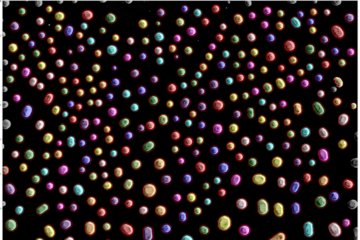All genres
141.
Talk
Pespektiven innovativer Eisen- und Stahlforschung. Clausthaler Werkstoff-Symposium, Clausthal-Zellerfeld, Germany (2006)
142.
Talk
Structure and properties of advanced high-strength and supraductile light-weight steels. THERMEC 2006, Vancouver, Canada (2006)
143.
Talk
Nano-Carbides and the Strength of Steels as Assessed by Electrical Resistively Studies. THERMEC 2006, Vancouver, Canada (2006)
144.
Talk
Superplastische Stähle und superplastische near-net-shape Formgebungen. 2. Warmumformtag MPIE, Düsseldorf, Germany (2006)
145.
Talk
Neuentwickelte TiAl-Basislegierungen für den Leichtbau von Triebwerks- und Motorkomponenten. Kolloquium IPE Werkstofftechnik, Duisburg, Germany (2006)
146.
Talk
High-temperature properties of boride-strengthened Fe3Al-based alloys. 13th International Student's Day of Metallurgy, Leoben, Austria (2006)
147.
Talk
New Generation of High Strength and Ductility Steels. Material Innovative. Automobil-Forschung-Energietechnik, Bayreuth, Germany (2006)
148.
Talk
Entwicklung und Eigenschaften korrosionsbeständiger ferritischer Fe-Al-Cr Leichtbaustähle. Wissensforum: Nichtrostende Stähle, Düsseldorf, Germany (2006)
149.
Talk
Sind Legierungen der intermetallischen Phasen TiAl und NiAl zukünftige Strukturwerkstoffe? Wissensforum: Neuartige hochwarmfeste Werkstoffe, Düsseldorf, Germany (2006)
150.
Talk
Iron-Silicon Alloys with Optimized Microstructure for the Improvement of Soft Magnetic Steel Sheets. Meeting “TEMPUS Parabolic Airplane Flight 2005”
, DLR Bonn, Germany (2006)
151.
Talk
Microstructure and mechanical properties of high-strength and supraductile manganese-aluminium lightweight TRIPLEX steels. 3rd Discussion Meeting on the Development of Innovative Iron Aluminium Alloys, Mettmann, Germany (2006)
152.
Talk
Wire casting and in-rotating-liquid-spinning processes for the continuous production of wires and high strength and soft magnetic fibres. 12th ISIJ-VDEh Seminar, Kitakyushu, Japan (2005)
153.
Talk
Wire casting and in-rotating-liquid-spinning processes for the continuous production of wires and high strength and soft magnetic fibres. ISIJ-VDEh Deutsch-Japanisches Seminar, Fukuoka, Japan (2005)
154.
Talk
Novel aspects in the Development of High-Strength and Supraductile Steels. BusinessForum21-Konferenz: Leichtbau im Automobil, München, Germany (2005)
155.
Talk
Superplasticity and Superplastic Forming at Higher Strain Rates of the Super Duplex Stainless Steel Fe–25Cr–7Ni–3Mo–0.3N. EURO SPF 05, Manchester, UK (2005)
156.
Talk
Structures and Properties of Advanced High-Strength and Supra-Ductile Light-Weight Steels. Seminar, Leuven, Belgium (2005)
157.
Talk
Structures and Properties of the Refractory Silicides Ti5Si3 and TiSi2. Spring-Meeting of the German Physical Society, Berlin, Germany (2005)
158.
Talk
Untersuchung des Erstarrungsgefüges einer unter Schwerelosigkeit erschmolzenen intermetallischen TiAl-Legierung. Workshop "Entwicklung der Basis - Erkennen der Perspektiven", Materialwissenschaften und mg-Forschung, MPI für Eisenforschung, Düsseldorf, Germany (2005)
159.
Talk
Entwicklung hochfester, supraduktiler und crashresistenter Leichtbaustähle für die Verkehrstechnik. Philip Morris Stiftung, Hearing 2005, München, Germany (2005)
160.
Talk
Sind Legierungen der intermetallischen Phasen TiAl und NiAl zukünftige Strukturwerkstoffe? VDI Seminar, Düsseldorf, Germany (2004)










